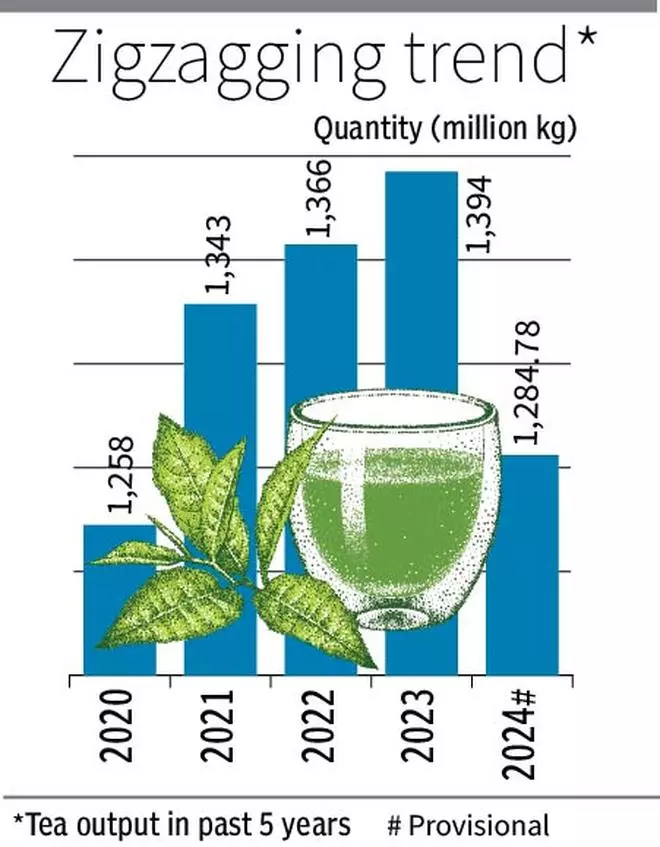India’s tea output in the 2024 calendar year touched a four-year low at 1,284 million kgs (mkg) as adverse weather impacted the output across key producing regions in all major States in northern and southern parts.
Tea output during 2024 was down 7.8 per cent at 1,284.78 mkg over the previous year’s output of 1,394 mkg, as per the Tea Board’s latest data. In 2023, tea output touched a record 1,394 mkg.
The dip in production during 2024 was more pronounced in North India, where the output was lower by about 100 mkg or nearly 8.5 per cent at 1,057.98 mkg over 1,156.98 mk in 2023. In the South, the decline was about 10 mkg or nearly 4.17 per cent of the region’s output at 226.80 mkg over 236.68 m kg in 2023. Sources attributed the decline mainly to the erratic weather pattern witnessed in the producing regions.

Darjeeling down
In Assam, the largest producing State, the production was down 5.6 per cent at 649.84 mkg compared with 688.33 mkg a year ago. In West Bengal, the total output declined by 14 per cent to 373.48 mkg (433.54 mkg in 2023). In the Dooars region of West Bengal, tea production was down at 209.43 mkg (237.71 mkg), while in Terai it was lower at 158.45 mkg (189.82 mkg). In Darjeeling, the tea production declined to 5.60 mkg from the previous year’s 6.01 mkg. In the other growing regions of North India, consisting of Himachal and other States, the production declined marginally to 34.66 mkg (35.11 mkg).
In the South, the production dropped 2 per cent to 163.92 mkg (167.40 mkg), while in Kerala the extent of the decline was 8.4 per cent at 58.38 mkg (63.75 mkg). In Karnataka the tea production declined 18.6 per cent to 4.50 mkg (5.53 mkg).
Commenting on the decline in South Indian tea output, R Sanjith, Secretary General, UPASI said the most significant drop in output occurred during the second quarter April-June of the year. “This downturn was primarily driven by an acute drought situation that severely impacted all major tea-growing regions. Despite efforts to recover, the adverse effects of the drought persisted, and the lost production could not be compensated for in the subsequent quarters. As a result, overall production for the year remained significantly lower than expected.”
Sanjith said that South India’s tea production dropped in both the second (April-June) and third (July-September) quarters, leading to a 9.88 mkg decline in the annual crop.
“The April-June 2024 quarter reported severe crop loss (nearly 21.18 m.kg) across tea growing origins in the region due to adverse climatic condition – irregular rainfall, drought like situation with the excessive heat experienced during May 2024,” he added.


